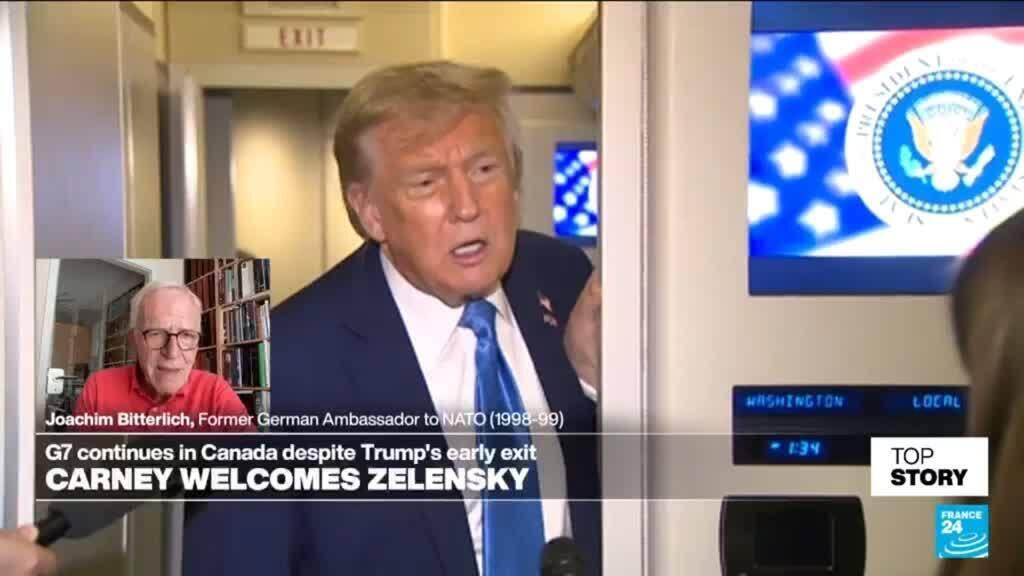In Germany, a long century long dispute is coming to end.
The house of Hohenzolern – a German Nobel Family, which belonged to the last German Emperor, Wilhem II, ie – had long claimed for various items kept in the German museums. He demanded millions of people in the compensation of the excluded palaces and inventory.
The entire saga, George Frederick Prince of the great grandson of the previous German emperor, went to court, the final changed the strategy of the aristocratic house in 2023. He withdrew compensation claims and thus cleared the way for out-of-court talks. The talks begin at the end of 2024, resulting in the new agreement entered.
Art works to stay in the museum
The success of the culture’s new German Minister of German, Wolfram Wimer (CDU) and George Frederick Prince of Priusia, announced success in May 2025.
The federal government and the states of Berlin and Brandenberg had reached an agreement to reach an agreement with the former ruling house of Hohenzolarn, which was to manage the anterior art and cultural items to establish a non-profit “Hohanzolorn Art Foundation”.
Now that the agreement has been signed and sealed by the PRISAN Cultural Heritage Foundation and the supervisory bodies of the German Historical Museum, and the agreement has been signed and sealed.
According to Wimer, the public will be the biggest winner. The collection that covers around 3,000 items will now include the Museums run by the Prussia Palace and Garden Foundation Berlin-Brandenberg and the Prussia Cultural Heritage Foundation in the German Historical Museum.
The new Foundation Inventory – wants to manage Fernic, Tableware and Painting – Berlin and Potsdam have about 70 palaces, villas and other qualities that were owned or used by the Hohenzolurn family until 1945.
Therefore, there are objects related to the family that were seized in early 1918, after the end of the monarchy.
Outbreak of ‘Jankars’
At the end of World War II, Soviet soldiers conquered the east of the Elba River to the east German regions and with subjects with the bulk of the Hohenzolarne regions.
The Soviet Union believed “Jankars”-Bhoomi-Nali-with northwesternness-like a column of class enemy and Nazi system. Therefore in 1945, all great houses in the Soviet -occupied area were abolished without compensation.
After more than four decades, Berlin’s wall collapsed and Germany again joined. From a minute to the second minute, several users Hohanzolorn Mahal and Estates were on the Federal Republic.
But in 1990, the German integration treaty stated that the 1945 land reform would not be reversed, which means Hohenzolens had to write its old properties in the past.
A few 30 years later, the successor of the last emperor demanded the restoration of millions and cultural property from the German state – in vain. So the matter went to court.
Did Hohenzolens help the Nazis and assist the ‘Nazis’?
This question played a central role in the compensation controversy: Was representative of Hhenzolarn’s home with national socialists who ruled Germany between 1933 and 1945? In particular, the previous German Emperor was the successor of Wilhelm II, who had “significant support for national socialism” in 1918?
And what role did the son of the last emperor and former Crown Prince Wilhel play play between world wars? Did he help the Nazis come to power to re -establish the monarchy?
The so -called “Compensation Act” of 1994, which controls the compensation of landlords, whose assets were more terminated in 1945 in 1945, suggests that anyone who provides great assistance to “Hitler” Hitler and Nazis “and has no right to compensation.
In fact, historical documents proved Wilhem’s relationship with Hitler, which featured photos and films with dictator and other Nazi leaders. However, Wilhem is expected to crown him by the Nazis, the new emperor was never felt and historians continue to debate the role of Wilhem in the Nazi kingdom.
Search for proximity with Hitler
Among his autobiography, two German historians Lothar Machtan (“The Crown Prince and the Nazis”) and Stephen Malinowski (“The Hohenzolens and the Nazis” described Crown Prince as a radical anti -Dimocrat and described Hitler as a radical anti -Dimocrat. His mission was to restore the monarchy.
Malinowski and his colleague Peter Brant concluded that the Wilhelm of Prussia’s behavior had “greatly aided” to the establishment and consolidation of the national socialist rule.
In fact, the East-Mukut Rajkumar called for Hitler’s election in the German presidential election of 1932. He later claimed Hitler that he had cast him two million votes.
Wilhem publicly demonstrated solidarity with new necklaces. In a television interview, Jacker Packalder, a historian of Munter, said, “Hohanzolurns’ symbolic capital of 1932/33 was greatly imported to the Nazis, even though Crown Prince had his agenda in the process.” ,
Debate is going on but disposal reached
The editor of the Anthology “Dye HohanzolurnDeBet” (Hohanzolorn Debate) published in 2021 suspected the thesis fascist relationships.
Historian Frank-Lothar Crol saw Wilhel’s “marginal commitment” for the Nazis. He may have gone to Hitler, but he did not share his totalitarian ideology.
For decades, a crowd of lawyers, politicians and historians deal with the reinstatement and compensation of the descendants of the Wilhelm of the Prussia. Now an agreement has finally reached, and the public can benefit the most.
It is originally an updated version of an article written in German.


